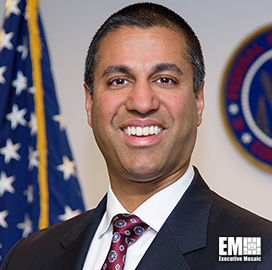Maria Roat, deputy federal chief information officer (CIO) and 2020 Wash100 Award recipient, recently discussed how developing emerging technologies, such as quantum computing, could invalidate encryption methodologies in the future. She added that federal systems must evolve to support innovation, FedScoop reported on Tuesday.
“Even as I’m modernizing some of our old systems, our legacy systems, I have to make sure that our current systems as well are keeping up,” Roat said.
Roat noted that investing in modern zero-trust security architectures and flexible, scalable cloud-solutions is essential to agencies, as they configure a variety of platforms to capitalize on emerging technologies.
In addition, the shift to telework has tested federal systems, which have seen a “huge escalation” in cyberattacks across the public and private sectors the pandemic began. Federal agencies have invested in defenses for blocking unwanted traffic and phishing emails to prevent cyberattacks.
“How the federal government operated around cybersecurity is really a testament to the maturity of the federal government around networking and its modernization over the last several years,” Roat said.
To combat insider threat, Roat stated that agency CIOs must invest in training their workforce to avoid mistakes and recognize phishing emails, so that the workforce can adapt to an evolving threat landscape. The CIO Council has assisted in training federal employees to identify cyberthreats first through its Federal Cyber Reskilling Academy and the Federal Data Science Training Program.
Potomac Officers Club recently hosted its Secure IT Modernization in Today’s Environment Virtual Event on Wednesday, August 26th. If you missed the event, you can still register to watch the footage in Potomac Officers Club’s Event Archive.
Michael Mestrovich, principal deputy chief information officer (CIO) for the U.S. Department of State, served as a keynote speaker at the event. Mestrovich addressed the integration and expansion of 5G and other emerging technologies; adaptation to a “new normal,” such as teleworking and reentry; and how leaders and businesses can use mission software factories to their advantage.
“Collaborative platforms have been the key enabler as the world has transitioned to telework. As we adopt telework, utilizing sharing platforms, I’ve personally seen productivity increase, but that comes at the expense of the individuals. They no longer take breaks because it’s so easy to transition from meeting to meeting through these platforms,” Mestrovich said.
Mestrovich then discussed which applications were already completed prior to the pandemic, and those that were in transition. Mestrovich said that the department’s cloud migration prior to COVID-19 was a “lynchpin” to the successful migration to telework.
To learn more on federal IT modernization, watch POC’s Secure IT Modernization in Today’s Environment Virtual Event.








